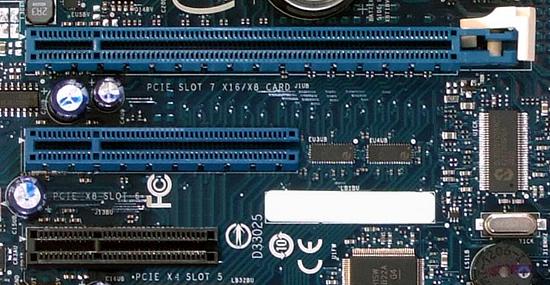- Related articles
- All Cisco XFP-10GER-OC192IR's information (List price, Specs, Datasheet PDF, Compatibility
- Optical Transceivers for Cisco WS-C3650-48PQ-L Switch
- What is a converged network adapter?
- All Cisco SFP-OC48-SR's information (List price, Specs, Datasheet PDF, Compatibility matri
- Optical Transceivers for Cisco SF200-24FP-UK Switch
- The Things You Need to Know about 10GBASE-CX4 Ethernet Standards
- Optical Transceivers for Cisco WS-C2960S-48LPS-L Switch
- What is a single mode fiber?
- All Cisco DWDM-XENPAK-40.56's information (List price, Specs, Datasheet PDF, Compatibility
- Optical Transceivers for Cisco ME-3400E-24TS-M Switch

What is PCI Express?
PCI Express (Peripheral Component Interconnect Express), officially abbreviated as PCIe, is a high-speed serial computer expansion bus standard, designed to replace the older PCI, PCI-X, and AGP bus standards. PCIe has numerous improvements over the older standards, including higher maximum system bus throughput, lower I/O pin count and smaller physical footprint, better performance scaling for bus devices, a more detailed error detection and reporting mechanism (Advanced Error Reporting, AER), and native hot-plug functionality. More recent revisions of the PCIe standard provide hardware support for I/O virtualization.
The PCI Express electrical interface is also used in a variety of other standards, most notably in ExpressCard as a laptop expansion card interface, and in SATA Express as a computer storage interface.

How to Change PCI-E Speed
- You can Change PCI-E Speed with some easy steps mentioned below.
- Reboot your computer and press the "Delete" key on the keyboard repeatedly during start up to access the BIOS configuration menu.
- Use the "Up" and "Down" arrow keys on the keyboard to select "Frequency/Voltage Control" and press "Enter" to access the PCI-E control options.
- Use the "Up" and "Down" arrow keys on the keyboard to select "PCI Express Frequency Control" and press "Enter." Press the "Left" arrow key to change the value from "Disabled" to "Enabled" and press "Enter."
- Use the "Up" and "Down" arrow keys to highlight "PCI Express Freq" and press "Enter." Change the PCI-E frequency value by increasing or decreasing the value in small increments. For instance, if the default value is 110, change it to 115 to increase the speed and 105 to lower the speed. Press "Enter."
- Press "F10" on the keyboard to save the changes and exit the BIOS menu. The computer will reboot.
- Use the computer for 15 minutes. Surf the Internet, play a video game or just do whatever you normally do on your computer, and if the system doesn't freeze or encounter any problems, re-enter the BIOS menu and increase or decrease the PCI-E frequency by another increment of five.
Summary
A little-known fact is that you can install any PCI Express expansion card in any PCI Express slot. For example, you can install an x1 expansion card in any kind of PCI Express slot; it doesn’t need to be installed in an x1 slot. So, if you have an x4 expansion card but your motherboard doesn’t have an x4 PCI Express slot, no problem; simply install it in an x8 or x16 slot.





















































